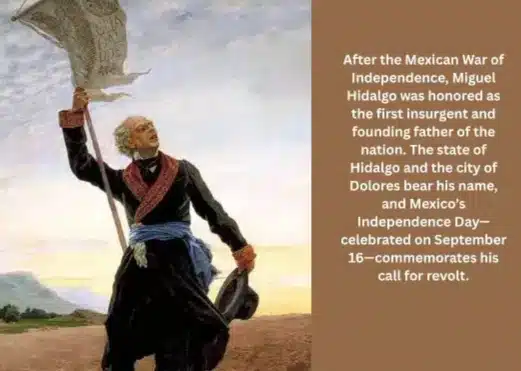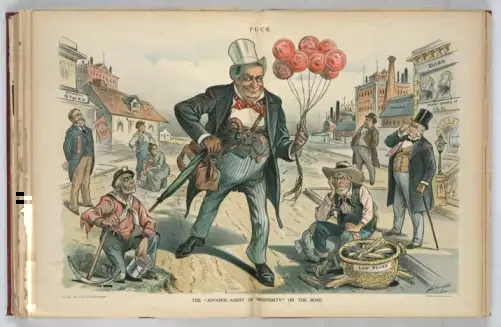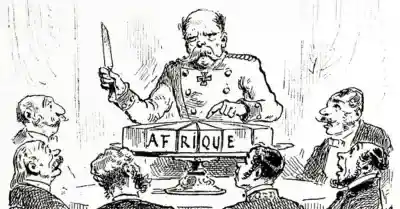California’s Golden Age: Flashed the Dreams of Manifest Destiny with Eureka
In the pivotal year of 1848, a momentous event unfolded that would significantly impact the destiny of the United States—the historic discovery of gold in California. President James K. Polk, in a far-reaching speech to the United States Congress, officially confirmed this surprising gold bonanza. In this context of the California Gold Rush (1848–1855), the gold bonanza refers to the massive influx of gold discoveries and the successive economic explosion and prosperity that followed.
The upcoming excitement sparked by Polk’s announcement pushed fortune-seekers and pioneers from every corner of the country toward the undomesticated landscapes of the West. It is notable that altogether, around 750,000 pounds of gold were extracted during the Gold Rush. The highest came in 1852 when miners discovered gold valued at $90 million, equivalent to $2.7 billion in today’s 2021 dollars!
The California Gold Rush, arising from the attractive promise of additional wealth, not only improved the territory of the West Coast of the United States but also played a vital role in shaping the broader history of the nation’s Manifest destiny that was a belief or doctrine in the 19th century that claimed the expansion of the United States across the American continents was not only justified but also bound to happen inevitably.
 |
| Gold Rush Image, California |
This article unravels the profound influence of the California Gold Rush of 1848 on the course of the United States. It also explores how finding gold made the idea of Manifest Destiny even more important than ever before.
💻 Table of Contents:
- From Spanish Settlers to Gold Rush Fever: The Dynamic Evolution of California
- Gold Fever: The Influx and Impact on California’s Population
- French Pioneers in the Gold Rush: A Cultural Imprint on California
- Gold Rush Dynamics: Chinese Immigration during the Gold Rush
- Manifest Destiny and the Gold Rush Revolution: A Complex Relationship
- President Polk Sparks the California Gold Rush: A Nation Transformed
From Spanish Settlers to Gold Rush Fever: The Dynamic Evolution of California
In the past, the region now known as California was initially settled by the Spanish in 1683. Later, in 1821, it became part of Mexico. In 1839, John Sutter, a German-Swiss settler, arrived
there and established a colony called New Helvetia, which is now part of Sacramento in the Central Valley. However, during the Mexican–American War from 1846 to 1848, the United States gained control of the region. In 1846, U.S. forces took over California, and a ceasefire was agreed upon in January 1847.
Around this time, John Sutter decided to build sawmill in the forest about 30 miles northeast of his colony. He hired James Wilson Marshall, a carpenter from New Jersey, to oversee the construction.
On January 24, 1848, while working on the mill, Marshall discovered small pieces of gold in the South Fork American River. However, before news of this discovery spread, the Treaty of Guadalupe Hidalgo was signed in Mexico City on February 2, 1848, transferring control of the region to the United States.
Two workers at the mill, Henry Bigler and Azariah Smith, who were part of the Mormon Battalion, documented their experiences. Bigler recorded the date of the gold discovery in his diary. Sutter claimed ownership of the gold, and Joseph Libbey Folsom (Investigator Gold Discovery & Real Estate Investor) confirmed the discovery in June, 1848. The first gold flake found by Marshall was sent to President James K. Polk in Washington D.C. in August 1848. and is currently exhibited at the National Museum of American History.
 |
| Manifest Destiny |
Gold Fever: The Influx and Impact on California’s Population
When news of the gold spread, a large number of people migrated to the newly acquired U.S. territory of California. The population grew significantly, with around 14,000 non-natives increasing to approximately 85,000 newcomers within a year. In 1849, an additional 81,000 people arrived, and in 1850, another 91,000 arrived.
Many settled in the newly established town of Coloma, California, near Sutter’s Mill. More gold discoveries followed, and over the next seven years, around 300,000 people migrated to California—about half by land and half by sea. They came in search of gold or to provide goods and services to the gold seekers. This transformative event, known as the California Gold Rush, brought about significant changes to the territory through the massive influx of people and the economic impact of gold. California became a U.S. state in 1850.
French Pioneers in the Gold Rush: A Cultural Imprint on California
The California Gold Rush of 1848-1855 attracted people from across the world, including a substantial influx of French immigrants. During this time, numerous French fortune-seekers were enticed by the allure of gold and the potential for prosperity in the untamed wilderness of California. French migrants brought along their talents, knowledge, and cultural heritage, leaving an enduring imprint on the state’s growth and progress.
The California Gold Rush stands as the most significant mass migration in American history, just before the gold discoveries in California in 1848; France had a population of 35 million people. Out of this national populace, approximately 30,000 French citizens (as they were correctly referred to after the Revolution of 1848) ventured to the California goldfields. In addition to its demographic impact, the Gold Rush played a pivotal role in expediting California’s admission into the United States as a state. With remarkable swiftness, preparations such as the establishment of a constitution and legislature were undertaken in 1849, leading to California’s official statehood in 1850.
 |
| Gold Mining in California, USA |
The California Gold Rush triggered an immense surge in California’s population, drawing approximately 80,000 ambitious gold-seekers to the region in search of fortune. The impacts of the Gold Rush were significant. Entire indigenous communities faced attacks and were forcibly displaced from their lands by the gold-seekers, commonly known as “forty-niners,” a term derived from 1849, the peak year of Gold Rush immigration.
Gold Rush Dynamics: Chinese Immigration during the Gold Rush
During that period of the California Gold Rush, numerous factors such as ongoing conflicts, famine, and economic hardships in southeastern China contributed to a wave of Chinese immigration to America. Lured by the allure of striking it rich and the possibility of improving their lives, a significant number of Chinese men embarked on the arduous journey to California. The prevailing dream among many of these immigrants was to accumulate substantial wealth and then return to their homeland.
Between 1849 and 1853, an estimated 24,000 young Chinese men made their way to California, seeking their fortunes in the goldfields. These individuals formed a distinct community within the larger influx of gold-seekers, establishing their own neighborhoods and businesses. They faced numerous challenges and discrimination, but their perseverance and hard work contributed to the growth and development of California.
 |
| California Gold Rush ad |
💻 You May Also Like:
- Manifest Destiny: Geopolitical Doctrine behind U.S. Expansion
- The Spanish-American War: Roots in US Envision of Great Power Status
- Treaty of Guadalupe Hidalgo: Redefining the US-Mexico Border
Manifest Destiny and the Gold Rush Revolution: A Complex Relationship
The concept of Manifest Destiny fueled the desire for territorial expansion, with Americans seeking new lands and resources to fulfill their vision of a continental nation. The discovery of
gold at Sutter’s Mill in 1848, however, took the idea of Manifest Destiny to new heights. The promise of instant wealth and prosperity acted as a powerful catalyst, attracting a diverse array of individuals who were willing to leave behind their homes and embark on a perilous journey to the distant land of California.
This discovery not only transformed the nation’s geography but also reshaped its social fabric, economy, and infrastructure in ways that would have far-reaching consequences for years to come. The California Gold Rush of 1848 became a defining moment in American history, encapsulating the spirit of adventure, risk-taking, and ambition that characterized the era of westward expansion.
President Polk Sparks the California Gold Rush: A Nation Transformed
On December 5, 1848, President James K. Polk confirmed the substantial gold deposits in California, setting off a nationwide phenomenon. In his address to Congress, Polk’s validation of the rumors became a reality, inspiring a massive migration westward. The news, spread through newspapers, letters, and word of mouth, captivated the nation.
This declaration not only initiated the California Gold Rush but also legitimized the pursuit of riches, prompting people from diverse backgrounds to abandon their lives for the promise of a brighter future. President Polk’s announcement marked a pivotal moment in American history, unleashing a frenzy that forever transformed the nation and triggered a mass exodus toward the untamed lands of the West.
The Gold Rush Begins:
News of the gold discovery spread rapidly, capturing the imagination of Americans from all walks of life. The promise of unimaginable wealth lured fortune-seekers, laborers, and adventurers alike to embark on the perilous journey to California. The Gold Rush triggered one of the most significant and transformative mass migrations in American history.
 |
| Gold Mining in Art |
Economic Boom and Bust:
While some prospectors struck it rich, the majority faced harsh and disappointing realities. The promise of easy wealth proved elusive for many, and the boom-and-bust nature of the gold mining industry led to economic instability. As the easily accessible gold deposits were quickly depleted, miners had to invest in more sophisticated and expensive mining techniques, leading to increased competition and struggles for survival.
The Environmental Toll:
The frenzied quest for gold also took a toll on the environment. Rivers were diverted, hillsides were stripped bare, and extensive hydraulic mining methods scarred the landscape. The environmental degradation caused by the Gold Rush would have long-lasting effects on California’s ecosystems, a legacy that would be felt for generations.
Conclusion:
The Gold Rush had a profound and enduring effect on the history of both California and the United States. Its influence was far-reaching, sparking notable advancements in industry and agriculture. This transformative event played a crucial role in shaping California’s trajectory, driving substantial economic expansion and playing a key part in the state’s journey to becoming an official part of the United States.
The Gold Rush also prompted foreign businesses to thrive as they expanded the export of their goods and services to the burgeoning new consumer markets in California. Even now, we can still see the impact of the Gold Rush in California. The state’s slogan, “Eureka!” (“I found it!”) is a tribute to Gold Rush pioneers.
Frequently Asked Questions
The California Gold Rush (1848–1855) is famous for the historic discovery of gold in 1848, which sparked a massive influx of fortune-seekers and led to significant economic growth and westward expansion in the United States.
During the Gold Rush, around 750,000 pounds of gold were extracted. The peak year was 1852, when miners discovered gold worth 90 million, equivalent to 2.7 billion in today's dollars.
The Gold Rush caused California's population to skyrocket, from around 14,000 non-natives to 300,000 by 1855. This rapid growth led to California becoming a U.S. state in 1850.
Immigration was crucial, with an estimated 24,000 young Chinese men arriving between 1849 and 1853. They formed distinct communities, faced discrimination, but contributed significantly to California's development.
The concept of Manifest Destiny fueled westward expansion, and the discovery of gold at Sutter's Mill in 1848 acted as a catalyst, drawing thousands to California in search of wealth and opportunity. What is the California Gold Rush famous for?
How much gold was found in the California Gold Rush?
What was the impact of the Gold Rush on California's population?
How did immigration play a role in the Gold Rush?
How did Manifest Destiny lead to the Gold Rush?








